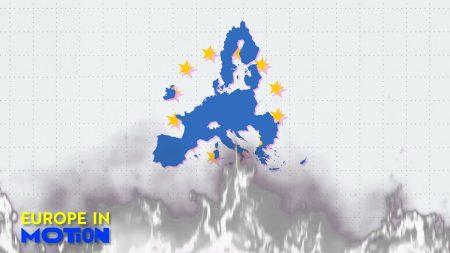The year 2024 etched its name into climate history as the hottest year on record, exceeding the 1.5°C warming threshold established by the Paris Agreement. This alarming temperature surge was partly fueled by El Niño, a climate pattern characterized by weakened trade winds in the Pacific Ocean, leading to warmer-than-normal waters off the Americas. While the emergence of La Niña in 2025, with its cooling influence, might prevent the breaking of 2024’s record, it’s crucial to understand that this temporary reprieve doesn’t negate the long-term trajectory of global warming. Even with La Niña’s anticipated cooling effects, 2025 is still projected to rank among the top three hottest years ever recorded, underscoring the persistent and escalating nature of climate change.
El Niño and La Niña, two contrasting climate patterns in the Pacific Ocean, exert significant influence on weather systems worldwide. El Niño events weaken or reverse the usual east-to-west trade winds, warming the eastern Pacific. Conversely, La Niña intensifies these trade winds, pushing warm water westward and causing cold water upwelling in the eastern Pacific, effectively cooling sea surface temperatures. These cyclical events, occurring every two to seven years with durations of nine to twelve months, trigger distinct weather patterns globally. La Niña is typically associated with increased rainfall in regions like northern Australia, southeastern Africa, and northern Brazil, while also potentially intensifying hurricane seasons and elevating flood risks in certain areas.
Looking ahead to 2025, the World Meteorological Organization (WMO) predicts the potential emergence of La Niña conditions between November 2024 and February 2025. However, the WMO cautions that La Niña’s cooling impact might be both “weak and short-lived.” Despite the anticipated La Niña event, the underlying trend of rising global temperatures driven by greenhouse gas emissions remains unaltered. The WMO emphasizes that a temporary cooling period does not change the long-term trajectory of climate change. The projected temperatures for 2025, even with the potential influence of La Niña, remain remarkably high, raising concerns among climate scientists.
The high temperature forecasts for 2025, considering the likely presence of La Niña, underscore the severity of the warming trend. Years without the warming influence of El Niño are typically cooler. Comparing 2025 projections to 2016, an El Niño year and previously the warmest on record, reveals a significant shift. 2016, once considered exceptionally warm, now appears comparatively cool in light of the 2025 forecasts. This contrast further highlights the accelerated pace of global warming and the diminishing influence of naturally occurring cooling phenomena in counteracting the effects of human-induced climate change.
While 2024 marked the first year global temperatures exceeded the 1.5°C threshold set by the Paris Agreement, it’s important to note that this doesn’t constitute a breach of the agreement’s terms. The Paris Agreement stipulates that the 1.5°C threshold must be surpassed persistently, over a period of 20-30 years, to be considered a breach. This single year exceeding the threshold serves as a stark warning, highlighting the urgency of addressing climate change and the rapidly closing window of opportunity to limit warming to within safe levels. The surpassing of this threshold, even for a single year, underscores the accelerating pace of climate change and the need for intensified global efforts to mitigate its effects.
The precise relationship between climate change and phenomena like El Niño and La Niña remains a subject of ongoing scientific investigation. While some links are established, the complex interplay between these natural climate oscillations and the overarching trend of anthropogenic climate change requires further research. Understanding these connections is crucial for accurately predicting future climate scenarios and developing effective mitigation and adaptation strategies. As global temperatures continue to rise, comprehending the nuanced interactions between natural climate variability and human-induced warming becomes increasingly critical for informing climate policy and action.














